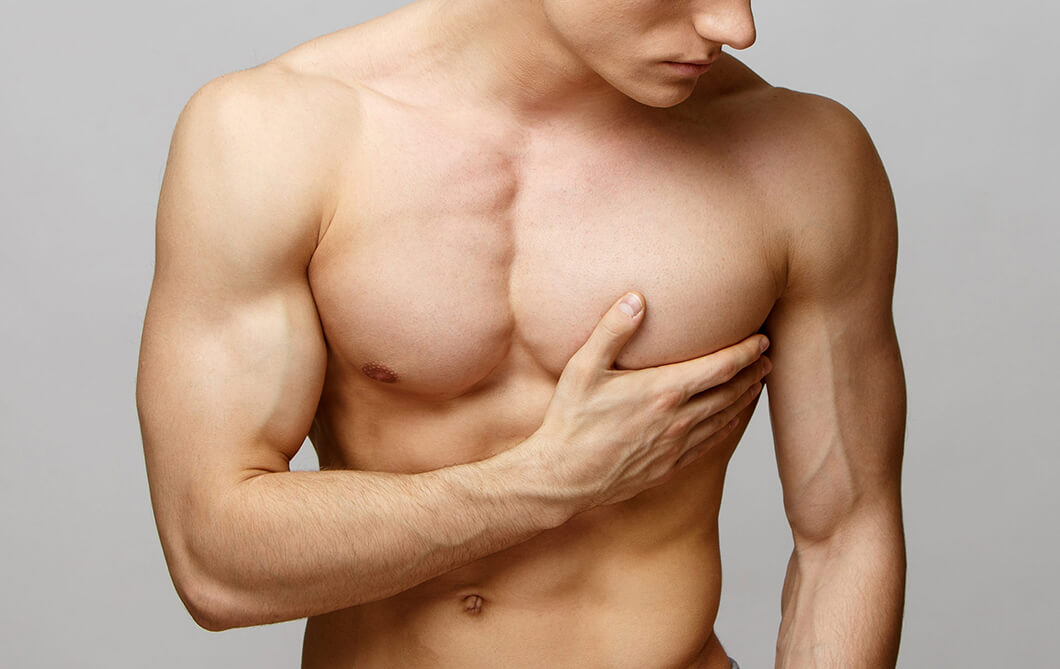
Breast enlargement in women develops during puberty due to estrogen. In men, their breasts may become prominent due to lubrication during puberty. However, under normal conditions, this growth should disappear over time.
What Does Gynecomastia Mean?
Gynecomastia is called breast enlargement in men as in women. This disease is caused by the change in the breast form of men. This change, which is not expected to occur in men, creates discomfort in general. The disease diagnosis is made as a result of the controls performed under the supervision of a doctor.
Under normal conditions, gynecomastia symptoms are noticed by the patient’s self-control. It is helpful to see a doctor due to abnormally observed symptoms. As a result of the control made by the doctor, especially with imaging such as MRI, clear information about the disease is obtained. As a result of the research, treatment methods are evaluated.
1- What Is Causing Gynecomastia?
The hormone that promotes breast growth is estrogen. This hormone usually is higher in women. However, it is produced in small amounts in also men. Usually, this hormone, produced in small quantities, is expected not to cause breast growth. However, as a result of the secretion of more than expected, breast enlargement occurs in men.
Since changes occur depending on the hormone, genetics is usually the leading cause of their formation. However, it may occur due to drugs other than genetics, hormones and diet. Especially in advancing ages, estrogen dominates with the decrease in male hormone production, and the breast structure grows.
2- How Is Gynecomastia Diagnosed?
It is possible to detect this disease with physical controls. However, knowing about the symptoms of the disease provides greater convenience. Men should examine the chest area in front of the mirror. It is possible to understand by differentiation in the breast, prominence in the nipple and other different symptoms compared to the former.
3- What are the Symptoms of Gynecomastia?
In this disease, not only the significant position of the breast but also different symptoms are manifested. In the advanced stage, pain occurs in the breasts of the patient. In addition to pain, fluid coming from the nipple is another severe symptom. Especially the presence of such symptoms means you must consult a doctor immediately.
4- How Can I Get Rid of My Gynecomastia?
It is seen that the doctor makes a decision depending on the stage of the disease during the treatment process. In the first stage, treatment is targeted together with medication. However, surgery is preferred in cases that do not result despite medication use. Surgery will help to achieve results. Thanks to the aesthetic surgeon, the problem is eliminated by performing surgery.
5- What is Gynecomastia Surgery?
Hormonal disease in men is treated with a surgical operation. This surgery removes fat and excess tissue from the cuts made around the chest. If the breast has excess fat, liposuction can be performed together with the surgery. It is a method specially applied to men in aesthetic surgery operations.
6- How Many Hours Does Gynecomastia Treatment Take?
The duration of the operation varies according to the patient’s condition. It is known that the process takes 2-3 hours on average. However, if liposuction is to be applied due to the patient’s dependence on extra adipose tissue, the treatment process may be prolonged. The operation is completed in a short time by a specialist plastic surgeon.
7- What Should Be Considered After Gynecomastia Operation?
As in every surgery, some situations should be considered after gynecomastia surgery. Water should not be touched for a certain period so the area does not become infected. It is necessary to stay in the hospital one day after the operation. Only the drugs recommended by the doctor should be preferred to relieve possible pain. The patient should not use different extra medicines at his discretion.
Sunbathing should be avoided so as not to affect the surgery’s outcome adversely. Sudden and heavy work should not be done until the first month after gynecomastia operation. Even if you are used to heavy exercises, it is helpful to stay away from them. This will increase your chances of recovery after surgery.